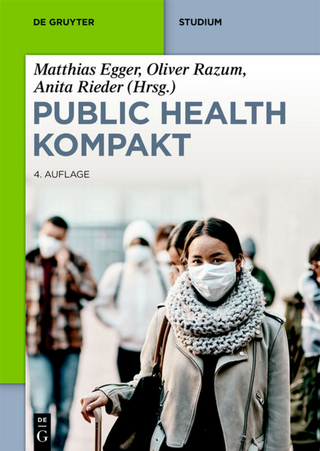
Risk Communication in Public Health Emergencies
Cambridge University Press (Verlag)
978-1-009-44903-8 (ISBN)
- Noch nicht erschienen (ca. Juni 2025)
- Versandkostenfrei innerhalb Deutschlands
- Auch auf Rechnung
- Verfügbarkeit in der Filiale vor Ort prüfen
- Artikel merken
This book clearly explains how public health officials plan, deliver and evaluate crisis and emergency risk communication before, during, and after health emergencies. Organized into four sections: pre-crisis planning, communicating during a health emergency, communicating and evaluating after a health emergency, and crisis leadership, it offers practical information as well as the opportunity to reflect on emergency risk communication best practices and theories. Including information on precrisis planning, implications of public health law, developing communication plans, writing messages, evaluating emergency risk communication, and crisis leadership, this book brings together theory and practical application to provide working professionals with evidenced-based research and practical knowledge to effectively communicate during health emergencies. Case studies of emergencies such as COVID-19, Zika, Ebola and Mpox and water crises, all use CDC's Crisis and Emergency Risk Communication (CERC) framework to analyze how health officials provided accurate and actionable health information to the public.
Kathleen G. V. Melville, Ph.D. is an expert in emergency risk communications with seventeen years' experience working in state, local, and federal public health agencies. During the COVID-19 pandemic she worked in the Centers for Disease Control and Prevention's Joint Information Center. She also teaches disaster communication at Tulane University.
1. Why you need to care about emergency risk communication; 2. Pre-crisis planning is necessary for public information and emergency communications: leveraging what you've got; 3. Identifying who needs to know what and when: it's not a surprise what your audiences need to know; 4. Addressing the information needs of public and medical community during a public health emergency; 5. How to get the message out: understanding all of your communication channels and when to use them; 6. Initial messages during a health emergency: addressing uncertainty and creating trust with the public; 7. Maintenance messages during a health emergency: how to protect the public's health and debunking misinformation; 8. Communicating during long public health emergencies: creating health communication campaigns; 9. Pivoting from crisis management to recovery: communicating the end of a health emergency; 10. Evaluating emergency risk communication and engaging in public education for the next emergency; 11. Effective communication during a health emergency: the role of spokesperson and working with the media; 12. Crisis leadership: staying steady on unsteady ground. Index.
| Erscheint lt. Verlag | 30.6.2025 |
|---|---|
| Zusatzinfo | Worked examples or Exercises |
| Verlagsort | Cambridge |
| Sprache | englisch |
| Themenwelt | Medizin / Pharmazie ► Medizinische Fachgebiete ► Notfallmedizin |
| Studium ► Querschnittsbereiche ► Epidemiologie / Med. Biometrie | |
| Studium ► Querschnittsbereiche ► Infektiologie / Immunologie | |
| Studium ► Querschnittsbereiche ► Prävention / Gesundheitsförderung | |
| ISBN-10 | 1-009-44903-6 / 1009449036 |
| ISBN-13 | 978-1-009-44903-8 / 9781009449038 |
| Zustand | Neuware |
| Haben Sie eine Frage zum Produkt? |
aus dem Bereich


